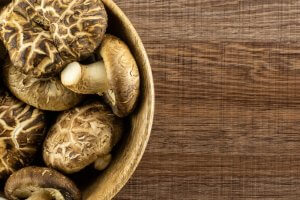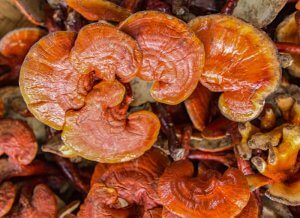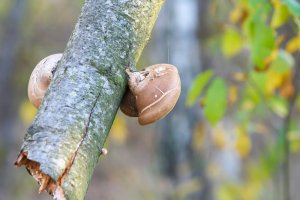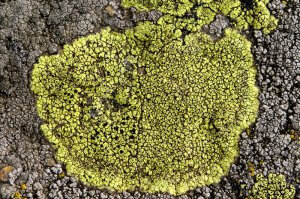Decorating with Dried Mushrooms and Fungi

Any natural item can be used to decorate your home, whether you use it to make a charming centerpiece for your table, homemade potpourri, or you simply want to give your home a unique and personal touch. In this article, we’ll show you one of the most innovative trends in natural decor right now – decorating with dried mushrooms and fungi.
Decorating your home with fungi doesn’t mean going out into the countryside, grabbing the first mushrooms you find, and simply leaving them on your kitchen table. You need to find creative ways to display them in your home, combining them and arranging them to create eye-catching decorations.
Using natural elements is the perfect way to give your home a fresh, original and understated look. Remember, they will instantly become the center of attention, encouraging people to rethink everything they believe they know about modern interior decor.
Decorating with bracket fungi

One of the most common species of fungi is the so-called bracket or shelf fungi. They are tough and woody in appearance, and can normally be found growing on tree trunks.
Belonging to the polypore family, these fungi are usually semi-circular in shape and often don’t have stalks. Instead, they attach directly onto the tree trunk.
Using fungi in your home is such an innovative decorative concept, and there are so many different ways to go about it.
One of natures curiosities

Nature offers us an infinite variety of shapes and colors to choose from, and each one is unique. One great example is Ganoderma lucidum. Let’s take a closer look at its main characteristics.
- Commonly known as the lingzi mushroom, Ganoderma lucidum grows on severely decomposed tree stumps and trunks. One of the most common varieties is the quercus mushroom, which you’ll normally see in the spring and fall.
- When you pick these mushrooms, they slowly start to lignify over time, which means that they become rigid and woody. This is the ideal time to put them in a bowl, and use them to decorate your home.
- Alternatively, you could also bury them in a sand substrate about 3/4 of an inch thick, and display them somewhere they’re sure to attract attention. This could be on a shelf, or even out in the garden.
- With their round shape and vibrant red color, these mushrooms will undoubtedly add a more dynamic element to your decor. By incorporating them into your home, you can elevate these simple living beings to stunning decorations.
From the countryside to your home

Another interesting example is fomes fomentarius, which grows on the trunks of living, broad-leaved trees such as poplar, as well as lime, oak, and willow. This robust fungus grows all year round and has been known to reach a considerable size.
- Known as tinder fungus, fomes fomentarius has a tough, woody appearance, and is usually brown or gray. The older it gets, the larger it grows.
- These can be a great option when it comes to making centerpieces for your table. Try to look for fungi that are around the size of a tennis ball. They can grow to a spectacular size, but you don’t want them to be too big.
- Tinder fungi are shaped like a horse’s hoof. With their gray-brown exterior, they almost look like they could be made of granite.
Nature can become a true source of inspiration when it comes to decorating your home.
Lichen – a very unusual fungi

Once you’ve worked out how to incorporate your chosen fungi into your home, you can also add some lichen. For example, you could make a miniature garden centerpiece for your table, placing the fungi on a plate, and using green lichen to simulate grass. With a little imagination, you can transform these natural elements into a really beautiful decorative concept.
One really interesting species is Evernia prunastri, also known as oakmoss, which grows on the trunk of pine and oak trees. It grows in a really interesting shape and would make a fantastic addition to any centerpiece.
Another option is the pixie cup lichen, Cladonia pyxidata. As the name suggests, this decorative fungus grows in the shape of a cup and is often found in damp soil on the forest floor. It requires high humidity levels to grow properly.
If you want to decorate your home with mushrooms and fungi, all you need to do is take a walk in the countryside and have a look at the infinite variety of plants and fungi nature has to offer.
Any natural item can be used to decorate your home, whether you use it to make a charming centerpiece for your table, homemade potpourri, or you simply want to give your home a unique and personal touch. In this article, we’ll show you one of the most innovative trends in natural decor right now – decorating with dried mushrooms and fungi.
Decorating your home with fungi doesn’t mean going out into the countryside, grabbing the first mushrooms you find, and simply leaving them on your kitchen table. You need to find creative ways to display them in your home, combining them and arranging them to create eye-catching decorations.
Using natural elements is the perfect way to give your home a fresh, original and understated look. Remember, they will instantly become the center of attention, encouraging people to rethink everything they believe they know about modern interior decor.
Decorating with bracket fungi

One of the most common species of fungi is the so-called bracket or shelf fungi. They are tough and woody in appearance, and can normally be found growing on tree trunks.
Belonging to the polypore family, these fungi are usually semi-circular in shape and often don’t have stalks. Instead, they attach directly onto the tree trunk.
Using fungi in your home is such an innovative decorative concept, and there are so many different ways to go about it.
One of natures curiosities

Nature offers us an infinite variety of shapes and colors to choose from, and each one is unique. One great example is Ganoderma lucidum. Let’s take a closer look at its main characteristics.
- Commonly known as the lingzi mushroom, Ganoderma lucidum grows on severely decomposed tree stumps and trunks. One of the most common varieties is the quercus mushroom, which you’ll normally see in the spring and fall.
- When you pick these mushrooms, they slowly start to lignify over time, which means that they become rigid and woody. This is the ideal time to put them in a bowl, and use them to decorate your home.
- Alternatively, you could also bury them in a sand substrate about 3/4 of an inch thick, and display them somewhere they’re sure to attract attention. This could be on a shelf, or even out in the garden.
- With their round shape and vibrant red color, these mushrooms will undoubtedly add a more dynamic element to your decor. By incorporating them into your home, you can elevate these simple living beings to stunning decorations.
From the countryside to your home

Another interesting example is fomes fomentarius, which grows on the trunks of living, broad-leaved trees such as poplar, as well as lime, oak, and willow. This robust fungus grows all year round and has been known to reach a considerable size.
- Known as tinder fungus, fomes fomentarius has a tough, woody appearance, and is usually brown or gray. The older it gets, the larger it grows.
- These can be a great option when it comes to making centerpieces for your table. Try to look for fungi that are around the size of a tennis ball. They can grow to a spectacular size, but you don’t want them to be too big.
- Tinder fungi are shaped like a horse’s hoof. With their gray-brown exterior, they almost look like they could be made of granite.
Nature can become a true source of inspiration when it comes to decorating your home.
Lichen – a very unusual fungi

Once you’ve worked out how to incorporate your chosen fungi into your home, you can also add some lichen. For example, you could make a miniature garden centerpiece for your table, placing the fungi on a plate, and using green lichen to simulate grass. With a little imagination, you can transform these natural elements into a really beautiful decorative concept.
One really interesting species is Evernia prunastri, also known as oakmoss, which grows on the trunk of pine and oak trees. It grows in a really interesting shape and would make a fantastic addition to any centerpiece.
Another option is the pixie cup lichen, Cladonia pyxidata. As the name suggests, this decorative fungus grows in the shape of a cup and is often found in damp soil on the forest floor. It requires high humidity levels to grow properly.
If you want to decorate your home with mushrooms and fungi, all you need to do is take a walk in the countryside and have a look at the infinite variety of plants and fungi nature has to offer.







